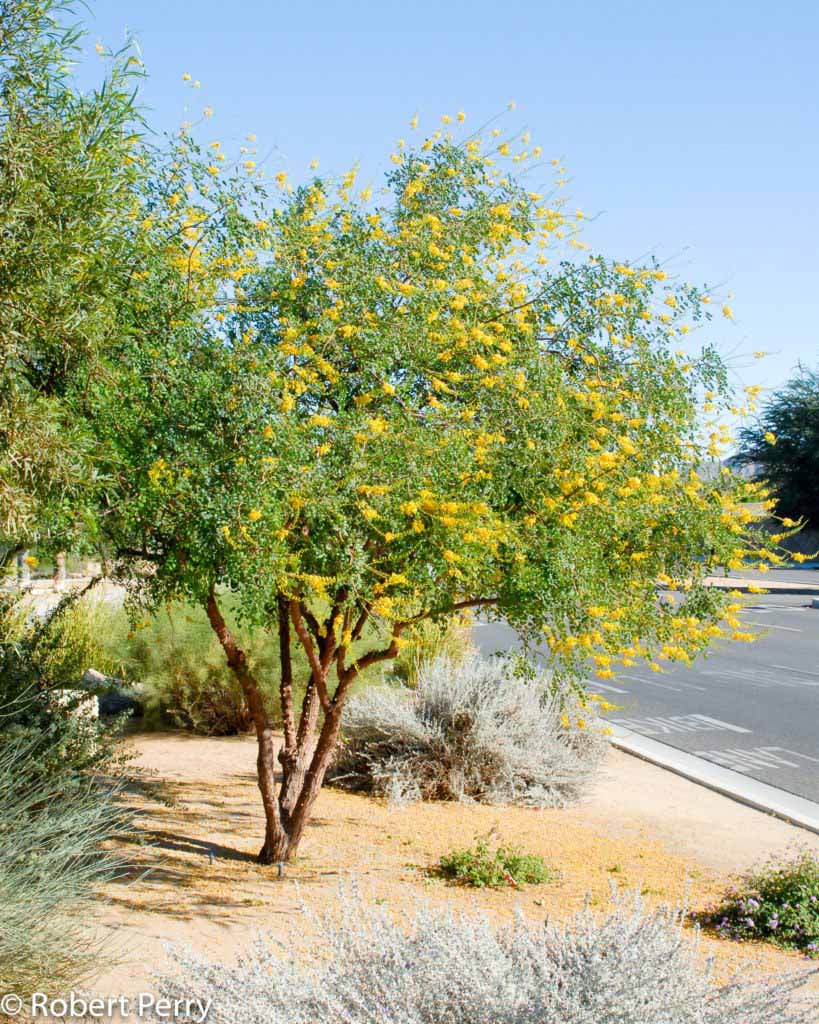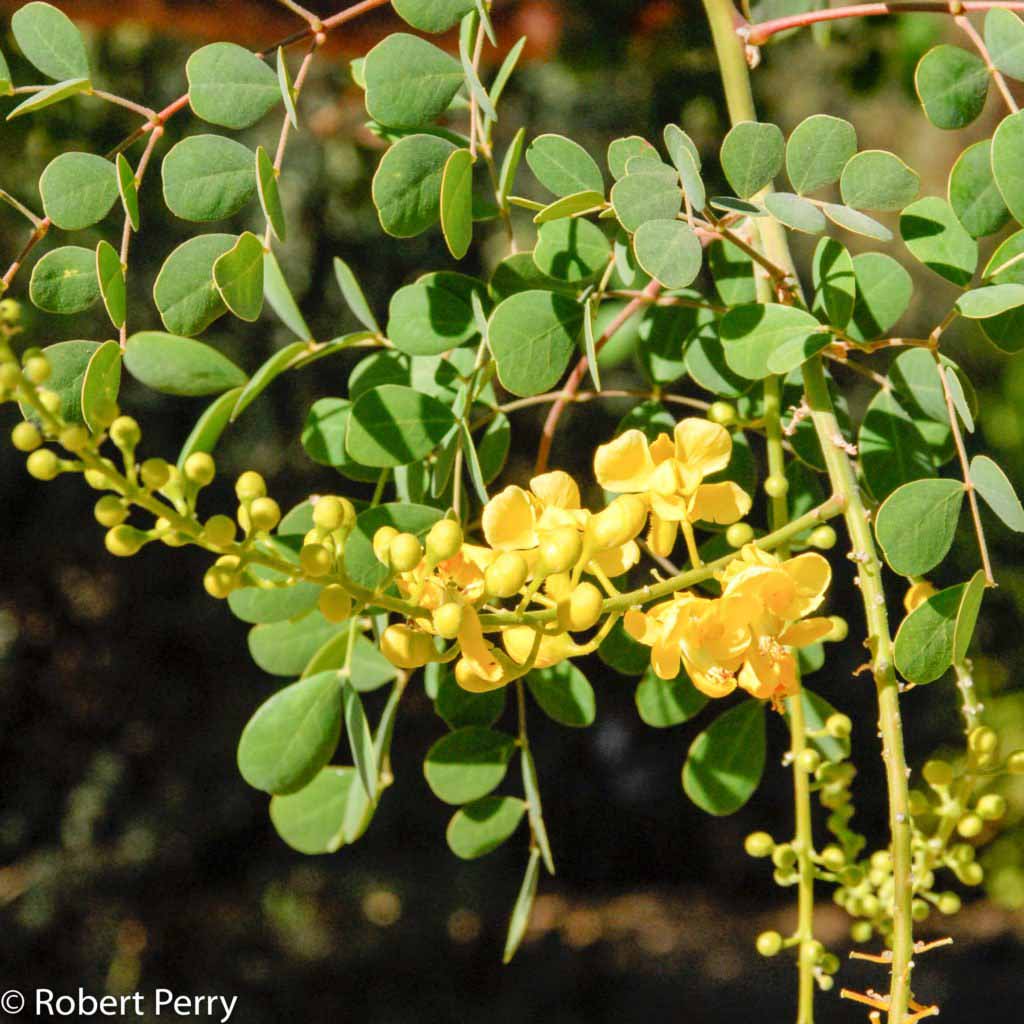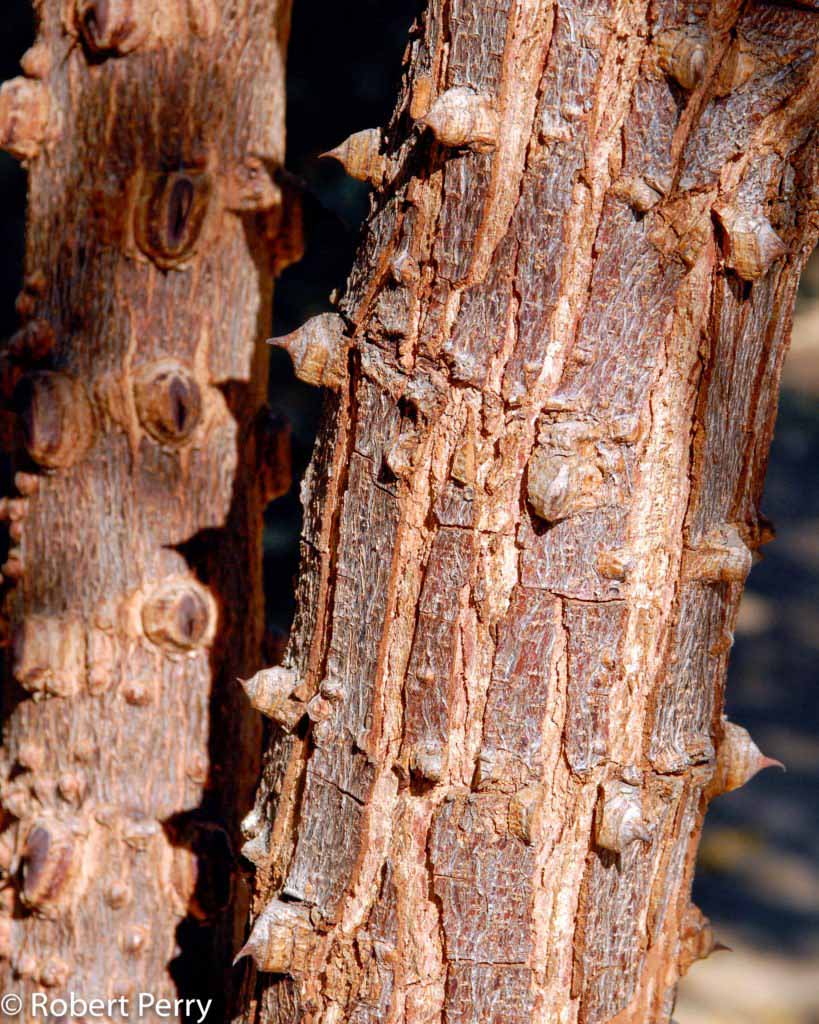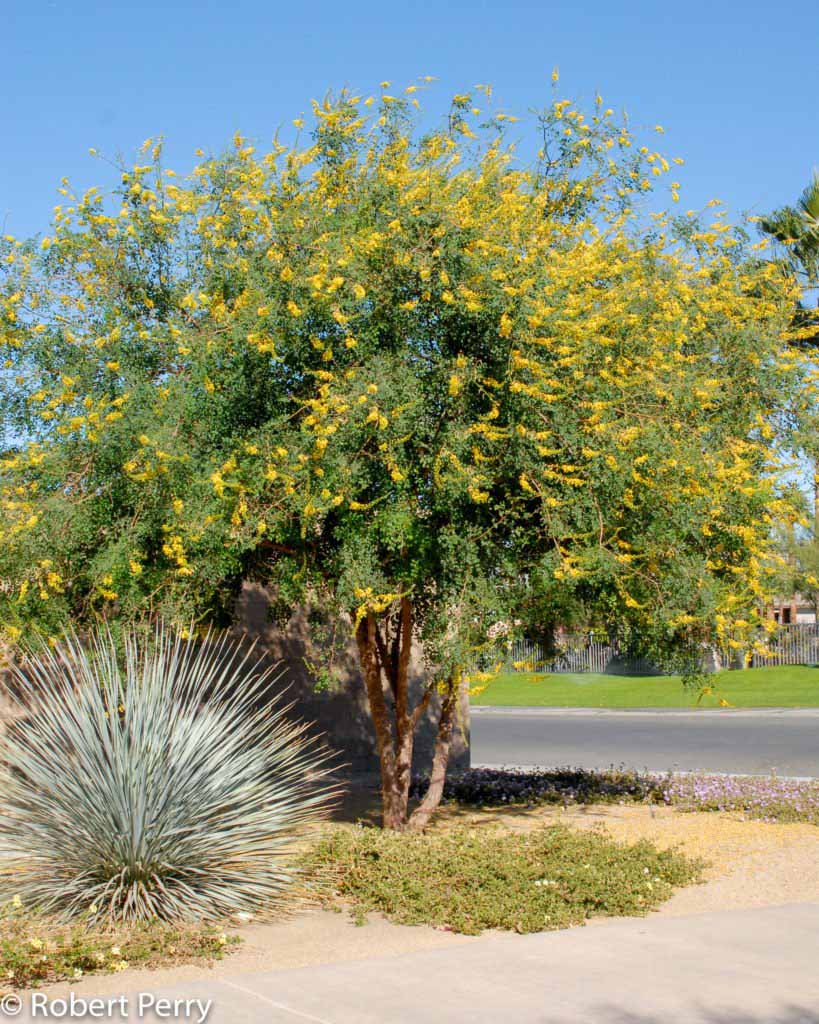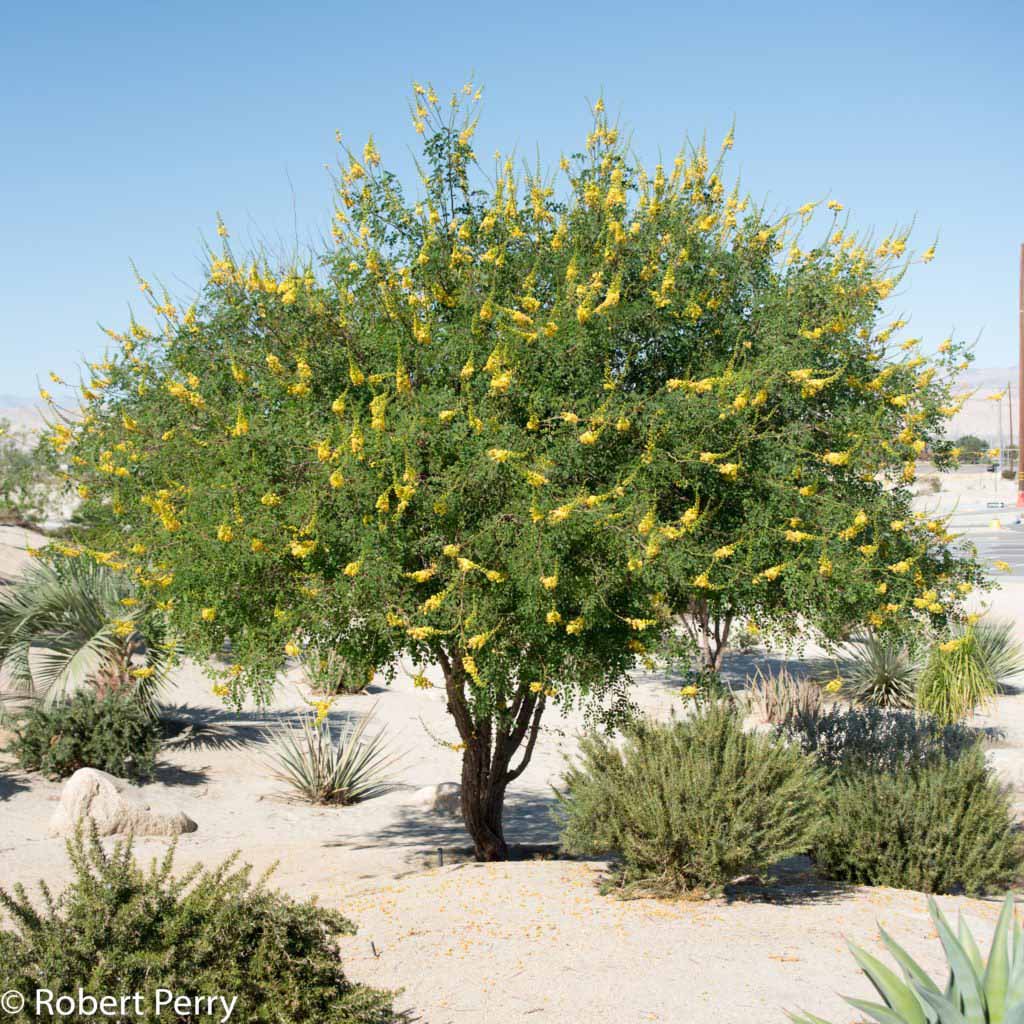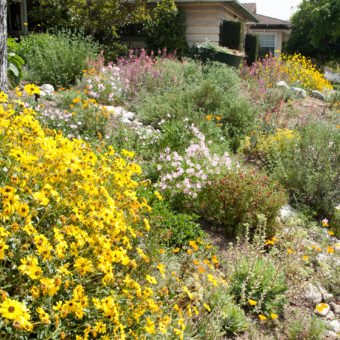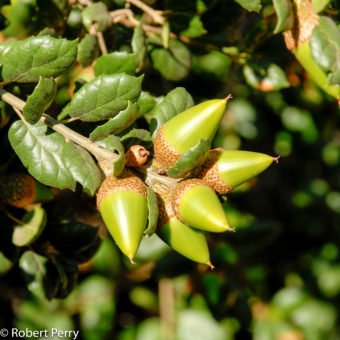Cascalote grows as a large shrub to small tree that is semi-evergreen to deciduous with a low branching habit, 15-20 ft. tall and as wide. Trunks and branches are covered with heavy thorns; leaves are bipinnately divided into 8-10 pairs of rounded leaflets. Long arching panicles of lemon-yellow flowers grow above the foliage in late fall to early winter; heavy red-tinged bean type pods mature in late spring.
Cascalote is native to the warm climate zones of southern Mexico where it is adapted to desert washes, mesas and slopes with long period of heat and drought. Experience has shown it can be damaged by cold below 25°F, but established plants quickly recover. These adaptations enable it to grow in all but the coldest microclimates in the Inland Empire.
Cascalote is useful as a small scale patio and courtyard flowering tree. In southwestern theme gardens, bark and seed pods provide colorful and interesting character. Pruning is important to achieve good shape and density and to reveal the plant’s trunks and branching character. Fall flowers occur when the majority of other plants are dormant.
